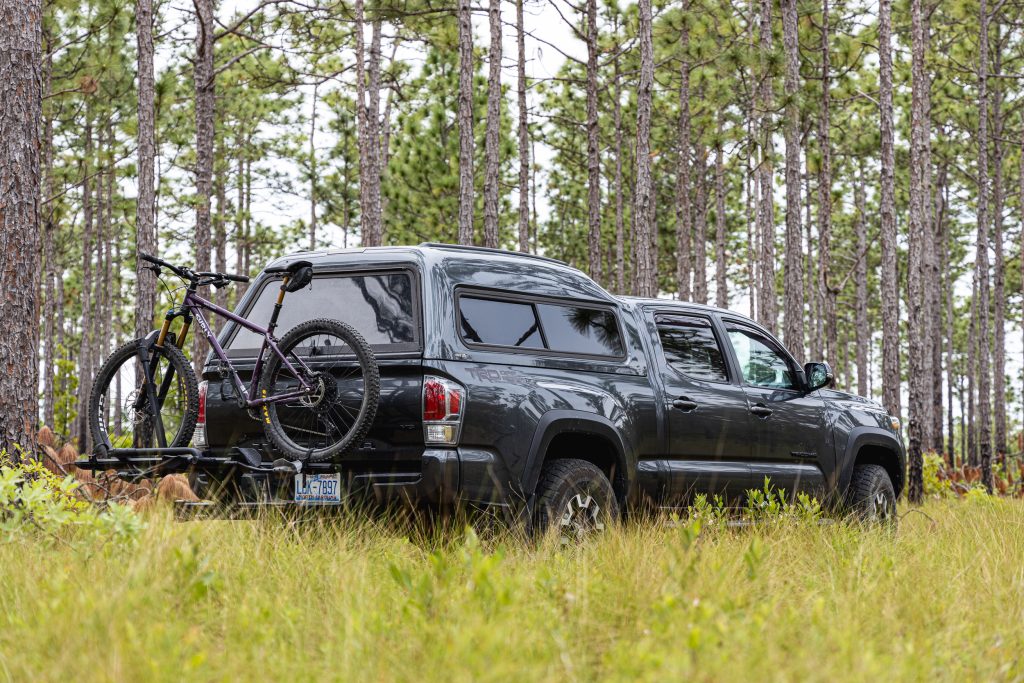
Like many Tacoma owners, my truck does double duty as a daily driver and an adventure rig. Over the past year, I’ve been building out a practical stealth camping setup with a mid-rise ARE topper and a full-length drawer system—super functional but inevitably not very light. With about 500 pounds of semi-permanent weight sitting over the rear axle, I started running into an issue many people can relate to: rear-end sag.
I didn’t want to jump into a full leaf spring upgrade just yet, especially knowing it would require a lift and a much larger investment. So, I started looking for a way to get better rear support without compromising ride quality or throwing off the rest of my setup. That’s when I came across the RoadActive Suspension (RAS) system—and honestly, it’s been the perfect middle-ground solution.
Table Of Contents
Why I Chose RAS
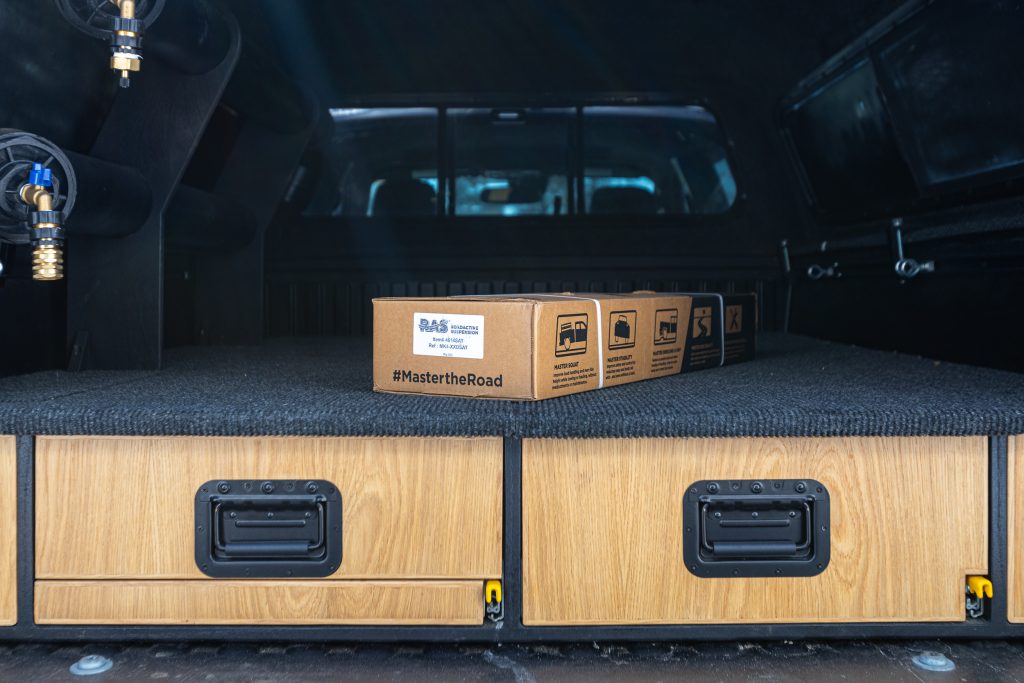
The idea of installing something that improves towing and load stability without changing ride comfort when unloaded caught my attention. Most add-ons I looked at either made the ride stiffer or required additional maintenance and adjustments. RAS claimed to be a set-it-and-forget-it system, and after reading through some solid reviews and seeing it used on trucks, I figured I would give it a go.
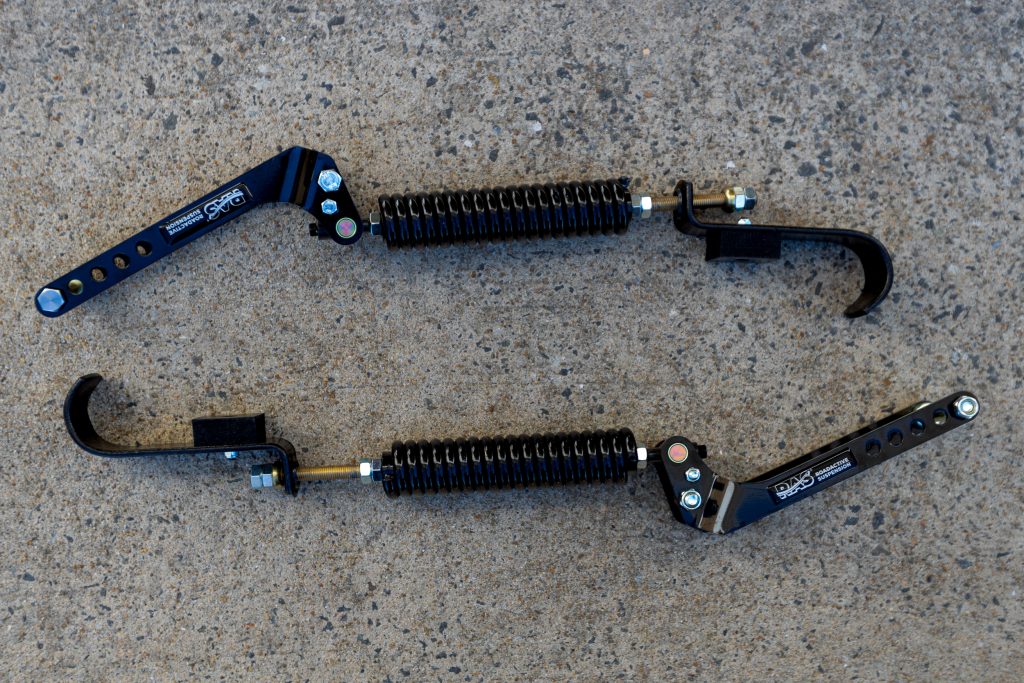
The system comes pre-assembled out of the box with a dedicated passenger side and a driver side system. Everything looked well-built out of the box—heavy-duty tension springs and brackets, reasonably clear instructions. There is no drilling or complex setup; just bolt on and adjust.
Features & Specs
- 5-year standard RoadWarranty (optional plus (+) version for small fee)
- same (or even better) ride quality over factory alone
- maintenance free
- install time under one hour
- reduces rear end squatting and bounciness
- increased stability
- better handling on and off-road
- decreases axle wrap
- does not need readjusting
- intended effect is similar to a helper spring, sway bar and traction bar
Installation
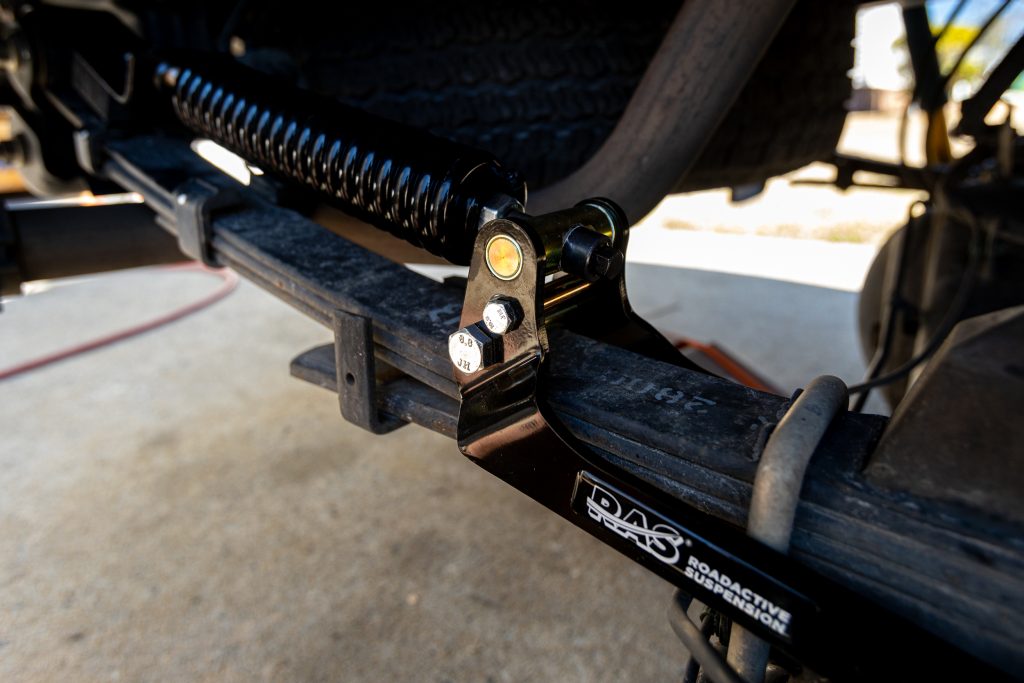
The install was about as straightforward as it gets. I did it in my driveway with a floor jack and a couple of basic hand tools. The process took me just under an hour from start to finish, and I was going at a relaxed pace. There was no removing leaf packs, no drilling, and no drama.
Step 1. Put Truck On Jack Stands
Safely jack up the truck’s rear and support the axle with jack stands. I removed my wheels to get better access, but this is not required.
Step 2. Install RAS Unit On Leaf Spring
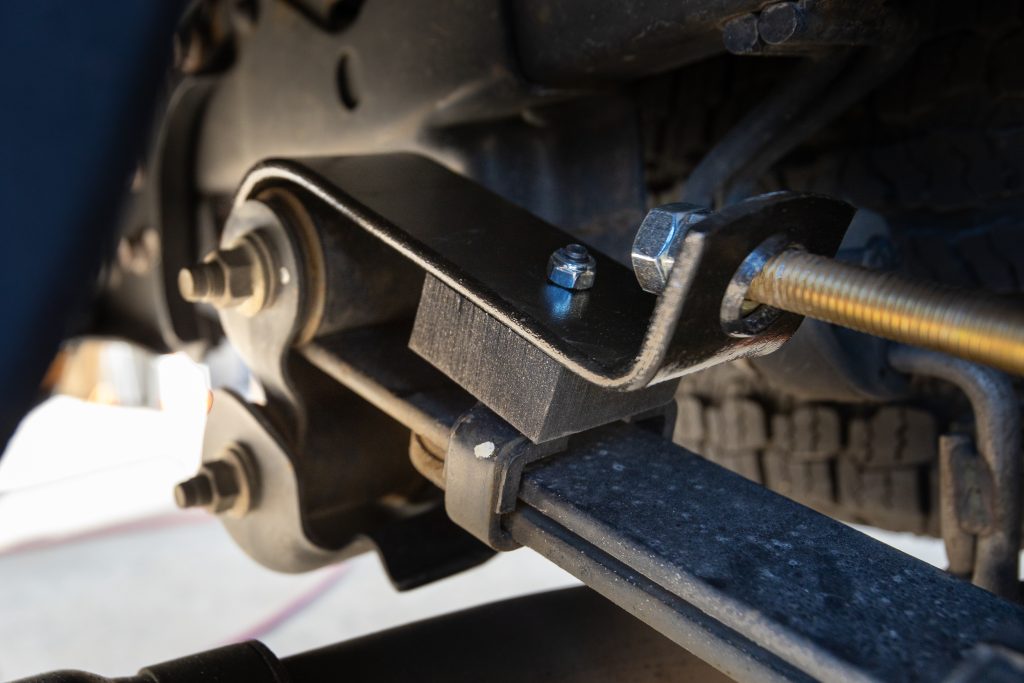
Slide the RAS unit onto your leaf spring. The U-shaped clamp goes around the U-bolts securing the leaf spring to the rear axle. The hooked end wraps around the rear-facing end of the leaf spring.
Step 3. Tighten Adjustment Nut
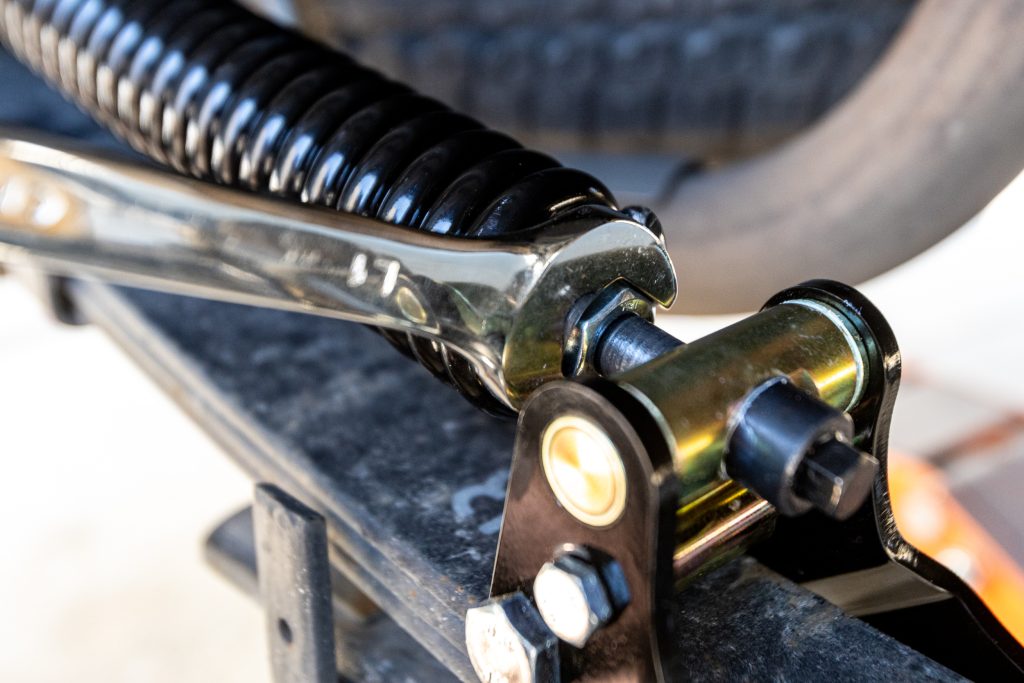
As you tighten the adjustment nut, you create tension in the spring, preloading the system and getting it set.
Step 4. Set Desired Spring Tension
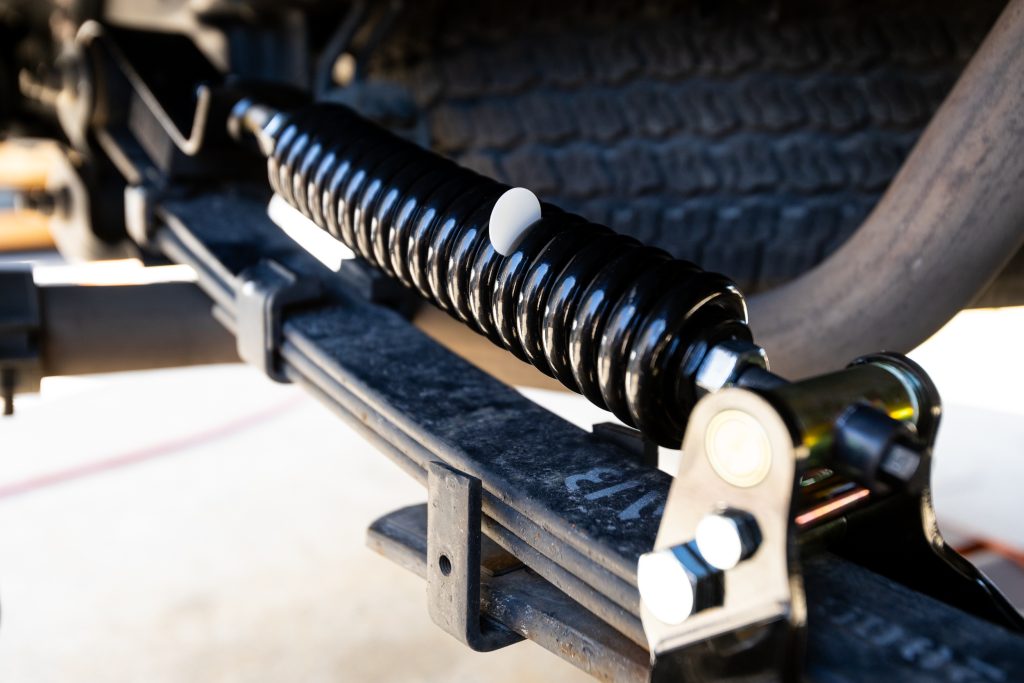
Use the supplied adjustment discs to set your desired spring tension. My kit came with a white and a black one. I decided to use the black one, which, according to RAS, equals a 40% load increase. White equals a 25% load increase. I have seen people online use a dime to split the difference.
Finally, make sure all bolts are tight and components are aligned. Toss the wheels back on, torque your lug nuts, lower the truck back down, and off you go.
There’s no re-torquing required down the line, and the system doesn’t need maintenance. If I ever want to remove or adjust it later, I can do that in less than 20 minutes per side.
Before & After Height Measurements
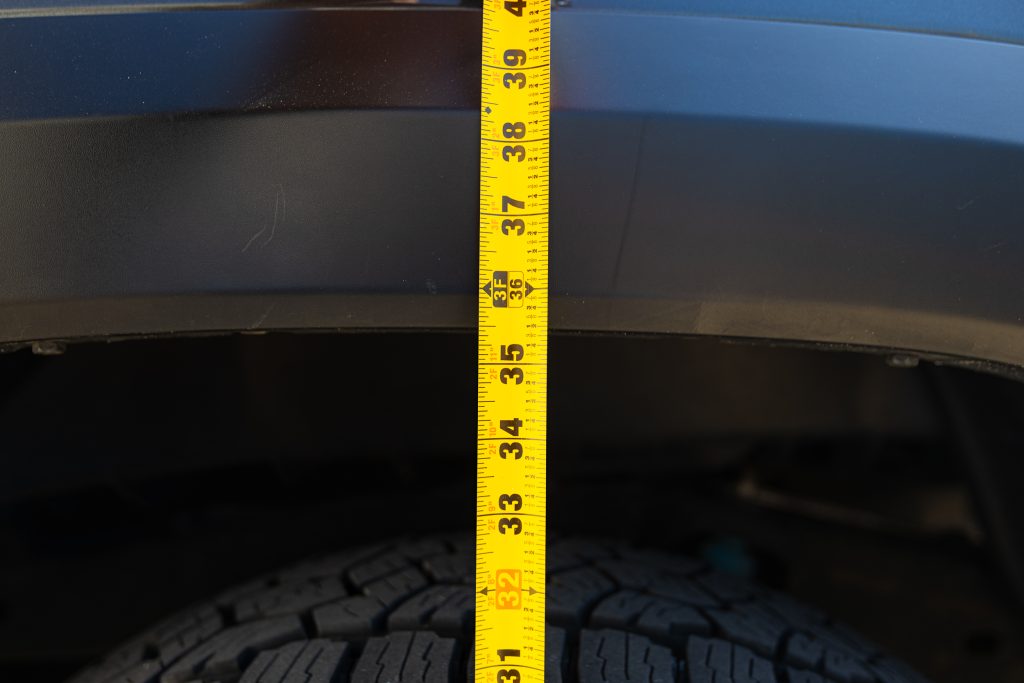
Before… sitting at just under 35.5″
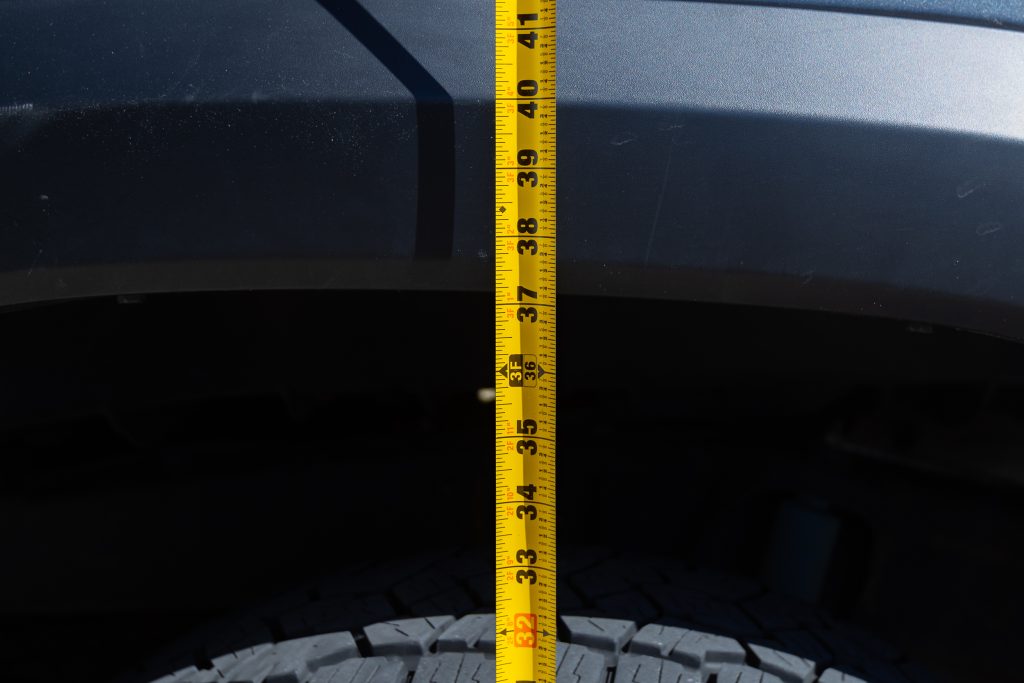
After… sitting just over 37″.
On-Road Performance
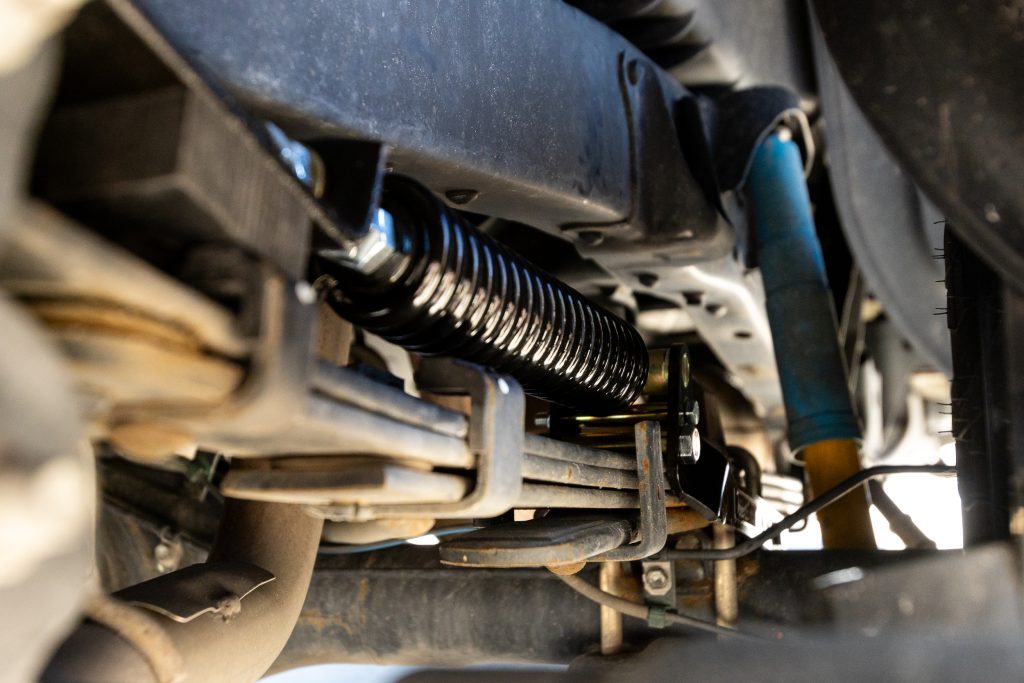
The first thing I noticed was less squatting on the truck’s rear. After the install, I gained almost 2″ back (measured from ground through wheel center to top of fender) on the rear, which is honestly insane.
With and without gear in the bed, the rear end no longer droops like it used to. Also, one of my biggest issues was constant bottoming out when hitting dips in the road. This system fixed that. The truck holds a better stance, and the factory rake is back, which I prefer both for looks and performance.
Handling-wise, it definitely tightens things up. Corners feel more stable, and there’s less sway when driving on uneven roads or through crosswinds. I also noticed way less axle wrap when accelerating from a stop or hitting washboard dirt roads, it’s just way smoother now. There is a dip in the asphalt in my neighborhood that I used to dread hitting on the ride home, but after installing the RAS, I have yet to feel the bump stops hit at normal speeds.
While I have only tested RAS with the topper and drawer system in the back, a quick search for other Tacoma owners’ experiences has indicated that installing RAS on an empty truck bed doesn’t seem to make the ride any harsher. Its adjustability means you can tune it to whatever load you have. There is a lot of value in that fact alone, if you ask me.
Off-Road Performance
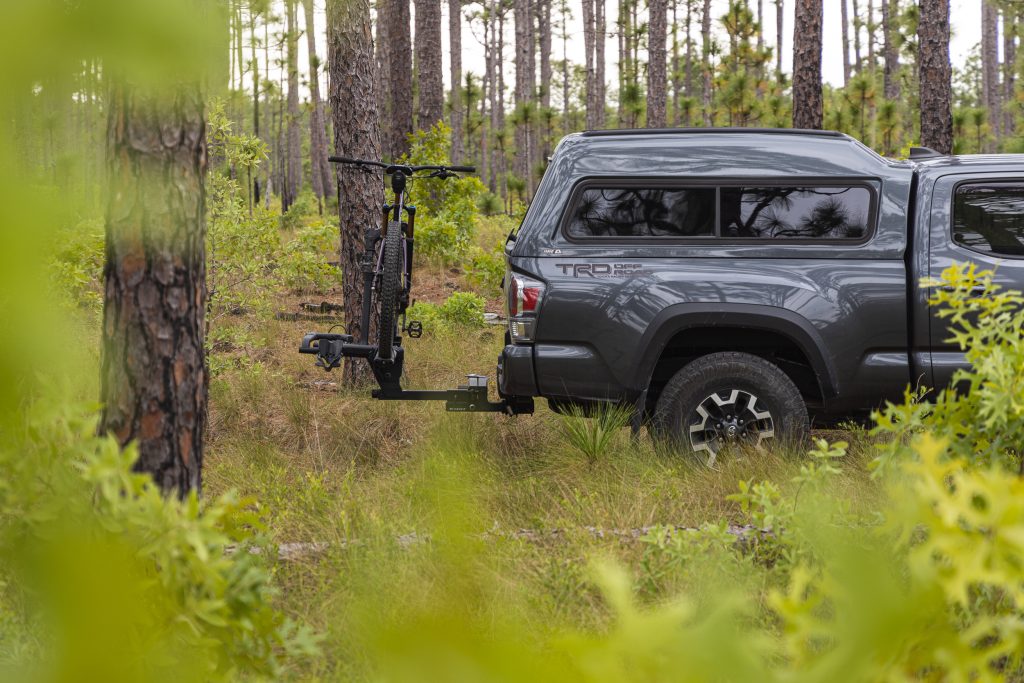
This is probably the part where most people have questions. To be fully transparent, I don’t take my Tacoma on hardcore off-road trails. I’ve been building it as a capable adventure rig—something that reliably gets me to trailheads for hikes and bike rides—so the suspension is still stock… for now.
The RAS system isn’t built with serious off-roading in mind, and I didn’t install it expecting it to improve my ability to tackle technical terrain. That said, the added weight of my setup (drawers, topper, gear) noticeably compromised the flex and performance of the rear leaf springs. The RAS returned the truck to its stock handling and stance under load. This system is designed to help your suspension carry or tow extra weight without excessive squat—and it does exactly that.
I’ve had no issues driving rough, rutted gravel roads, long stretches of beach track, or the occasional tight, overgrown backcountry route. It hasn’t gotten in the way, and for my use case, that’s exactly what I needed.
It’s worth noting that the RAS system could be viewed as an investment if you’re planning to lift your truck down the line. RAS states that their system is compatible with mild to moderate lifts (typically 1 to 2.5 inches). For me, that’s ideal as I plan to lift my Tacoma a few inches and eventually upgrade to a heavy-duty spring pack. But even with those upgrades, I still want the ability to tow a boat or haul a utility trailer full of compost for the garden. The ease of installation means I can quickly throw on the RAS system for extra support.
Final Thoughts
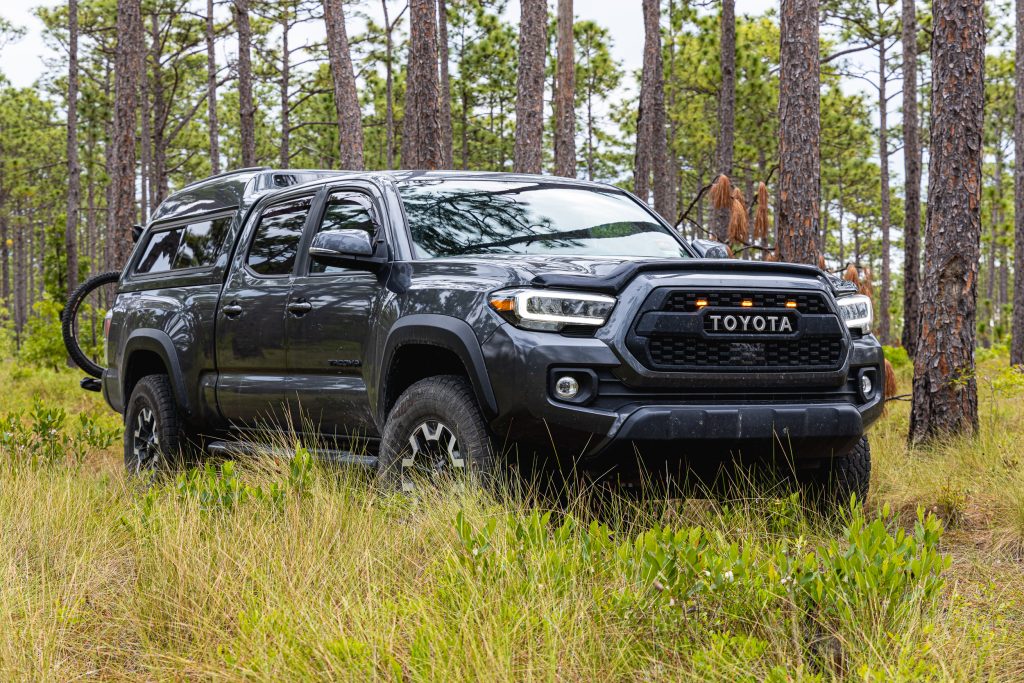
Suppose you’re running your Tacoma as a daily driver and weekend hauler like I am, with the truck sometimes loaded and sometimes empty. In that case, the RoadActive Suspension system is a super clean way to improve performance without overhauling your entire setup. It’s simple, effective, and doesn’t require constant adjustment or maintenance.
Would I recommend it? Absolutely. Especially if you’re tired of rear-end squats, the worry of temporarily sticking heavy items in the bed, or bouncing over every dip with gear in the back. For the price and ease of installation, this has been one of the most worthwhile mods I’ve done and will continue to be a tool for me to hold onto down the road should I need the temporary suspension support.


Great review and write-up. I would say I have my setup, very similar to yours (also use it for the same). Answered the fees things I was curious about!